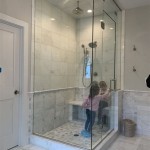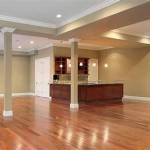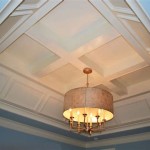Small Sloped Ceiling Bedroom Ideas: Maximizing Space and Style
A bedroom with a sloped ceiling presents unique design challenges. The angled walls can make the space feel smaller and limit furniture placement options. However, with careful planning and creative design choices, a small bedroom with a sloped ceiling can be transformed into a cozy and functional retreat. This article explores various ideas and strategies to maximize space and enhance the style of such a bedroom.
Optimizing Furniture Placement in Sloped Ceiling Bedrooms
Strategic furniture placement is crucial in a small bedroom with a sloped ceiling. The goal is to create a comfortable and efficient layout without compromising on aesthetics. Consider the following points when arranging furniture:
Bed Placement: The bed is often the focal point of a bedroom, and its placement is paramount. In a sloped ceiling bedroom, placing the headboard against the lowest wall is often the most effective solution. This prevents occupants from hitting their head on the sloped portion when getting into or out of bed. If the slope is particularly aggressive, a headboard may not be practical. In this case, the bed can be positioned with the head end parallel to the sloped wall, leaving more headroom for getting up and down. Another option is to place the bed under the highest part of the slope, maximizing headroom. Avoid placing the bed directly under the lowest point of the slope, as this can create a claustrophobic feeling.
Storage Solutions: Traditional dressers and wardrobes can be difficult to accommodate in a room with sloped ceilings. Instead, consider low-profile storage options such as drawers that fit under the bed. Built-in storage solutions are particularly effective, as they can be custom-designed to fit the specific dimensions of the room. For example, a built-in bookcase or shelving unit can be installed along the sloped wall, utilizing the awkward space for storage and display. This not only maximizes storage capacity but also creates a visually appealing feature. Consider using modular storage systems that can adapt to the angles of the ceiling.
Desk and Seating: If the bedroom needs to function as a workspace, positioning a desk under the sloped ceiling can be a space-saving solution. Ensure adequate headroom for comfortable sitting and consider a desk with a shallow depth. A small chair or ottoman can be placed in a corner to create a cozy reading nook. Floating shelves above the desk can provide additional storage for books and accessories. When selecting seating, opt for low-profile chairs or benches that won’t obstruct the flow of the room.
Creating Visual Space: Mirrors are valuable tools for making a small room feel larger. Place a large mirror on a wall to reflect light and create the illusion of more space. Strategically positioned mirrors can also visually correct the angles of the sloped ceiling, making the room feel more balanced. Avoiding clutter is important in a small room. Organize belongings and minimize unnecessary decorations to maintain a sense of order and spaciousness.
Lighting Strategies for Sloped Ceiling Bedrooms
Adequate lighting is essential in any bedroom, but it's particularly important in rooms with sloped ceilings, where natural light may be limited. The type of lighting and its placement can significantly impact the ambiance and functionality of the room. Consider the following lighting options:
Ambient Lighting: Ambient lighting provides overall illumination for the room. Recessed lighting is a good option for sloped ceilings, as it doesn't take up any vertical space. Track lighting can also be used to direct light where it's needed most. Chandeliers and pendant lights can add a touch of elegance, but they should be carefully chosen to avoid hitting the sloped ceiling. Opt for fixtures with adjustable heights or mount them strategically to ensure adequate headroom.
Task Lighting: Task lighting is specifically designed for activities such as reading or working. Bedside lamps are essential for reading in bed. Desk lamps provide focused light for working or studying. Floor lamps can be used to create additional task lighting and add visual interest to the room. Choose lamps with adjustable arms or shades to direct the light where it’s needed.
Accent Lighting: Accent lighting is used to highlight architectural features or decorative elements. Wall sconces can be installed on the sloped walls to add warmth and dimension. String lights can be draped along the ceiling to create a whimsical and cozy atmosphere. Spotlights can be used to highlight artwork or other decorative items. Experimenting with different types of accent lighting can dramatically change the mood of the room.
Color Temperature: The color temperature of the light bulbs can also impact the ambiance of the room. Warm white light (2700-3000K) creates a cozy and relaxing atmosphere, while cool white light (3500-4100K) is more energizing and suitable for tasks that require focus. Consider using dimmers to adjust the brightness of the lights and create different moods. Daylight bulbs can help to compensate for limited natural light.
Natural Light Enhancement: Maximizing natural light is crucial in a small room with a sloped ceiling. Keep windows unobstructed and use light-colored curtains or blinds to allow as much light as possible to enter the room. If possible, consider adding skylights or dormer windows to increase the amount of natural light. These features can also add architectural interest to the room.
Color Palette and Decorating Ideas for Sloped Ceiling Bedrooms
The color palette and decorating choices play a significant role in creating a visually appealing and functional sloped-ceiling bedroom. The selected colors and decorations can influence the perceived size and atmosphere of the room. Here are some considerations:
Color Selection: Light and neutral colors are generally recommended for small rooms, as they reflect light and make the space feel larger. White, cream, beige, and pastel shades are excellent choices for the walls and ceiling. Using a consistent color throughout the room can create a sense of continuity and minimize visual distractions. Accent colors can be introduced through bedding, curtains, and accessories to add personality and visual interest. Avoid using dark or saturated colors on the sloped walls, as they can make the room feel smaller and more enclosed. If wanting to use darker colors, consider an accent wall on a vertical surface of the room to add dimension without overwhelming the space.
Wall Treatment: In addition to paint, consider using wallpaper or other wall treatments to add texture and visual interest. Vertical stripes can make the walls appear taller, while horizontal stripes can make the room appear wider. Avoid using busy or intricate patterns on the sloped walls, as they can create a cluttered and overwhelming effect. Textured wallpaper can add depth and dimension to the room without making it feel smaller.
Textiles and Fabrics: The choice of textiles and fabrics can significantly impact the overall look and feel of the room. Opt for lightweight and airy fabrics for curtains and bedding to allow light to filter through. Use soft and comfortable textures to create a cozy and inviting atmosphere. Consider using patterned fabrics to add visual interest, but avoid using too many different patterns, as this can create a chaotic effect. A cohesive color scheme throughout the textiles will help tie the room together.
Accessories and Decor: Decorative accessories can add personality and style to the room, but it's important to avoid clutter. Choose a few carefully selected items that reflect your personal taste and complement the overall design of the room. Wall art can be used to add visual interest and draw the eye upward. Plants can add a touch of nature and create a calming atmosphere. Mirrors can be used to reflect light and create the illusion of more space. Ensure that the accessories are proportionate to the size of the room and avoid overcrowding the surfaces.
Vertical Focus: Utilize vertical space to draw the eye upward and emphasize the height of the room. Tall bookshelves, vertical wall art, or floor-to-ceiling curtains can create a sense of verticality and make the room feel larger. Avoid using horizontal lines or patterns that can visually flatten the space. Emphasize vertical lines in the furniture and accessories to create a balanced and harmonious design.
Transforming a small bedroom with a sloped ceiling requires careful consideration of furniture placement, lighting, and color choices. By implementing these ideas, it's possible to create a functional and stylish space that maximizes the available area and enhances the overall ambiance. A well-designed sloped-ceiling bedroom can be a cozy and inviting retreat.

How To Decorate A Bedroom With Slanted Ceiling The Nordroom

How To Decorate A Bedroom With Slanted Ceiling The Nordroom

How To Decorate Rooms With Slanted Ceilings Or Walls

26 Brilliant Bedroom Designs Ideas With Sloped Ceiling Slanted Layouts

Blog Ashlina Kaposta Bloglovin Slanted Ceiling Bedroom Sloped Design
28 Low Sloped Ceiling Bedroom Ideas To Maximize Space

How To Decorate Rooms With Slanted Ceilings Or Walls

20 Inspiring Ideas Children S Bedrooms With Sloped Ceilings

Maximizing A Space With Slanted Ceilings The Seattle Times

How To Decorate A Slanted Wall Bedroom City Mattress
Related Posts








